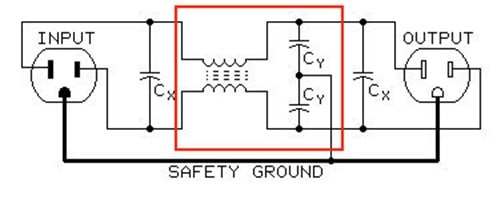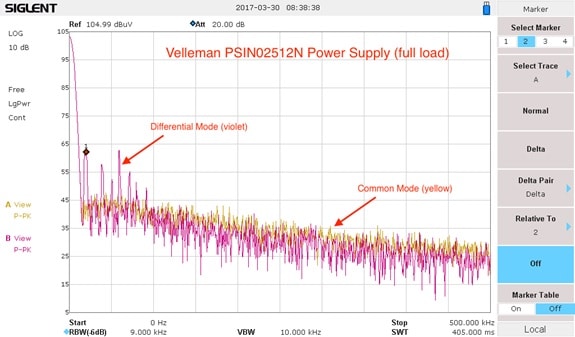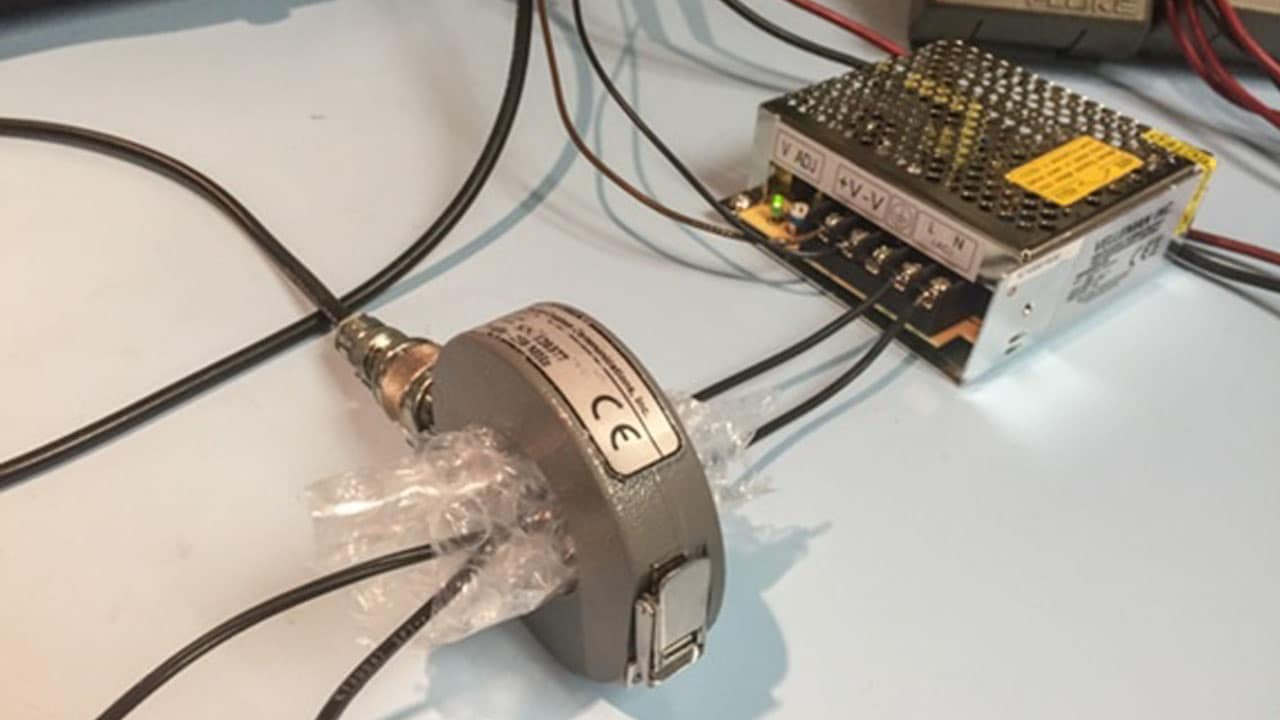When faced with excessive conducted emissions from switching power supplies, one of the first things to investigate and to determine the adequacy of is the power line filter. Line-powered switching supplies generally have both common mode and differential mode sections of the filter as shown in the generalized schematic in Figure 1.

When using a line impedance stabilization network (LISN), we are actually measuring the sum of the common mode and differential mode conducted voltages. An example is shown in Figure 2. We’re measuring a Velleman 12V / 2A switching supply (model PSIN02512N). The overall emissions weren’t too bad, so I zoomed in to measure from “0” to 2 MHz, so I could observe the noise better.

The result may be seen in Figure 3. Note the difference in measured values between line and neutral. Well-designed supplies usually have fairly equal measurements, so there is obviously some imbalance within the filter circuitry.

In order to separately break out the differential mode and common mode emissions, we’ll use a current probe. Note that this is not directly comparable to the LISN measurement, which is a voltage, but it will still provide some useful information on which is noisiest.
We’re all probably familiar with the procedure for measuring common mode currents. We simply clamp the current probe around both line and neutral wires and make the measurement. Remember, common mode currents flow out both wires in the same direction and normally end up radiating as well as conducting back into the power line. This is shown in the yellow trace of Figure 6.

On the other hand, to measure differential mode currents and cancel out the common mode currents, we need to configure the wires such that they feed through the current probe in opposite directions. Note that when we do this, the voltage reading will be twice the actual differential mode current (6 dB higher). This is shown in the violet trace in Figure 6.


Note that in Figure 6, we see that the differential mode currents are substantially larger than the common mode currents. This suggests the common mode section of the line filter is adequate, while the differential mode filtering could use some additional work. For example, a small series inductor in the line side would provide more impedance for the X-capacitor (Cx) to work with.
This technique of isolating the common mode and differential mode components of conducted noise currents may be a valuable tool for your troubleshooting toolbox.




